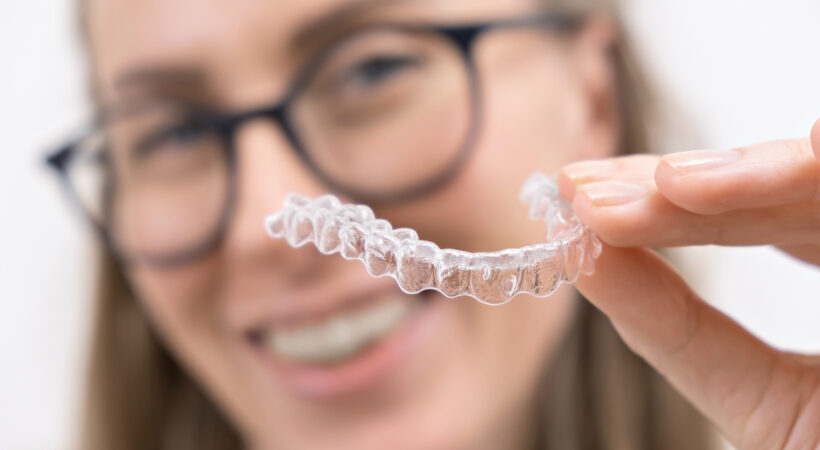Welcome to our blog, where we dive into the fascinating world of dentistry and explore how it intersects with cultural inclusivity. Picture this: a small isolated town like Mackay, nestled in the heart of a community where people come from various backgrounds and diverse cultures thrive. In such communities, engaging with patients from different cultures requires dental professionals to go beyond clinical expertise – it demands an understanding and appreciation for cultural diversity. In this article, we will explore the importance of cultural competence in dentistry, common barriers to culturally inclusive care, steps for creating a culturally inclusive dental practice, training and education for dental professionals, as well as the impact and benefits of embracing cultural inclusivity. So sit back, relax, and let’s dive into this enlightening journey together!
Understanding the Importance of Cultural Competence in Dentistry
In today’s diverse society, cultural competence in dentistry is more important than ever. It goes beyond simply providing quality dental care – it involves understanding and respecting the unique needs, beliefs, and values of patients from different cultural backgrounds. By embracing cultural competence, dental professionals can create a safe and inclusive environment where patients feel comfortable seeking care.
Cultural competence allows dentists to effectively communicate with their patients. Language barriers or differences in communication styles can hinder effective treatment planning and patient education. By being culturally competent, dental professionals can bridge these gaps by using appropriate language assistance services or employing bilingual staff who can better understand and address the specific concerns of diverse patients.
Moreover, recognizing cultural nuances is crucial for delivering personalized care. Different cultures may have varying attitudes towards oral health practices or treatment modalities. Understanding these preferences allows dentists to tailor their approach accordingly, resulting in improved patient satisfaction and adherence to treatment plans.
Additionally, culturally sensitive dentistry helps build trust between practitioners and their patients. When individuals feel understood and respected within healthcare settings, they are more likely to seek regular preventive care instead of only visiting when an issue arises. This proactive approach promotes long-term oral health outcomes for individuals within isolated communities like Mackay.
By prioritizing cultural competence in dentistry, dental professionals not only uphold ethical standards but also contribute to community engagement and overall well-being. Culturally inclusive practices foster a sense of belonging among patients from various backgrounds while promoting equal access to quality oral healthcare services.
In our next sections, we will explore some common barriers faced when implementing culturally inclusive care approaches in dental practice as well as practical steps that can be taken to create a truly inclusive environment for all patients.
Common Barriers to Culturally Inclusive Care
In providing culturally inclusive dental care, it’s crucial to acknowledge and address the common barriers that may hinder effective communication and understanding between dental professionals and patients from diverse backgrounds. These barriers can greatly impact the quality of care received by patients, leading to disparities in oral health outcomes.
Language differences often pose a significant challenge when attempting to provide culturally inclusive care. Without proficient language skills or access to interpretation services, dentists may struggle to effectively communicate important information about treatment options, preventive measures, and post-operative instructions.
Another barrier is cultural beliefs and practices that influence oral health behaviors. Different cultures have unique perspectives on oral hygiene practices, dietary habits, and even perceptions of pain management. Dentists must be aware of these variations in order to tailor their recommendations accordingly.
A lack of awareness or sensitivity towards different cultural norms can also impede culturally inclusive care. For example, certain cultures may prioritize collective decision-making rather than individual autonomy regarding treatment choices. Dentists need to respect these preferences while ensuring patient safety remains a priority.
Socioeconomic factors can further contribute as barriers for many communities who are unable to afford proper dental care due to limited financial resources or lack of insurance coverage. This disparity can result in delayed or inadequate treatment for individuals from marginalized communities.
Unconscious biases within healthcare systems must be recognized as potential obstacles hindering equitable care delivery. Stereotypes based on race, ethnicity, or socioeconomic status can lead to differential treatment experiences for patients belonging to minority groups.
To overcome these barriers and promote culturally inclusive care within dentistry requires ongoing education and training for dental professionals along with efforts at systemic change within healthcare institutions. By being mindful of diversity in culture while prioritizing effective communication strategies and addressing socioeconomic disparities head-on – we can work towards creating an environment where all communities like Mackay thrive through accessible dental services!
Steps for Creating a Culturally Inclusive Dental Practice
Step 1: Assess the Needs of Your Community
To create a culturally inclusive dental practice, it is crucial to understand the unique needs and preferences of your community. Take the time to research and engage with diverse groups in your area, such as ethnic communities or individuals with language barriers. This will help you tailor your services and communication to meet their specific needs.
Step 2: Train Your Staff on Cultural Competence
Providing cultural competence training for all members of your dental team is essential. This includes education on different customs, beliefs, and practices that may impact patient care. By enhancing their understanding and sensitivity towards diverse cultures, your staff can ensure respectful interactions and provide personalized care.
Step 3: Implement Language Services
Language barriers can hinder effective communication between patients and dental professionals. Consider providing interpreter services or hiring bilingual staff who can assist non-English speaking patients. By bridging this gap, you are enabling better understanding and fostering trust within the patient-provider relationship.
Step 4: Adapt Office Policies Accordingly
Your office policies should be flexible enough to accommodate various cultural practices without compromising quality care. For example, consider offering alternative payment options or adjusting appointment scheduling to respect religious observances or cultural holidays.
Step 5: Create a Welcoming Environment
Make sure that your physical space reflects inclusivity by incorporating culturally diverse artwork or literature in waiting areas. Additionally, strive for an inclusive atmosphere by promoting diversity among staff members so patients feel represented and understood.
By following these steps, dentists in isolated towns like Mackay can create culturally inclusive practices where communities engage and thrive. It’s more than just providing dental treatments; it’s about respecting individual differences while delivering high-quality oral healthcare!
Training and Education for Dental Professionals
Training and education play a crucial role in equipping dental professionals with the knowledge and skills needed to provide culturally inclusive care. In a diverse society like Mackay, where communities engage and thrive, it is essential for dentists to understand the unique needs and values of their patients from different cultural backgrounds.
One aspect of training focuses on cultural competence, which involves developing an awareness and understanding of various cultures, beliefs, practices, and communication styles. Dental professionals can benefit from workshops or courses that provide information about specific cultural groups commonly found in their community. This can help them navigate potential barriers such as language barriers or differing healthcare beliefs.
In addition to cultural competence training, dental professionals should also receive education on providing linguistically appropriate care. This includes learning key phrases or basic communication skills in different languages spoken by their patient population. By being able to communicate effectively with patients who may not speak English fluently, dentists can build trust and ensure accurate understanding of treatment plans.
Continuing education is another vital component for dental professionals seeking to enhance their ability to deliver culturally inclusive care. Staying up-to-date with research findings related to oral health disparities among different populations allows dentists to tailor preventive strategies accordingly.
By investing in training and education opportunities focused on cultural inclusivity, dental professionals can create a welcoming environment where patients feel understood and respected. This leads to improved oral health outcomes for individuals living in isolated towns like Mackay while fostering stronger connections within the community they serve.
The Impact and Benefits of Culturally Inclusive Dentistry
Culturally inclusive practices in dentistry have a profound impact on the overall well-being of individuals and communities, particularly in isolated towns like Mackay. By recognizing and addressing cultural barriers, dental professionals can create an environment where patients from diverse backgrounds feel valued, understood, and comfortable seeking oral healthcare.
One of the key benefits of culturally inclusive dentistry is improved access to care. When dental practices embrace diversity and strive to meet the unique needs of different cultures, they become more accessible to a wider range of individuals. This is especially crucial for isolated communities like Mackay, where access to healthcare services may already be limited.
Additionally, by incorporating cultural competence into their practice, dentists can enhance patient trust and satisfaction. When patients feel that their cultural values are respected and understood by their dental provider, they are more likely to engage actively in their oral health care journey. This leads to better treatment outcomes as patients follow recommended preventive measures or treatment plans.
Another important benefit is increased awareness about specific oral health challenges faced by certain populations. Dental professionals who prioritize cultural inclusivity gain insights into unique dietary habits or traditional practices that may affect dental hygiene or contribute to oral health issues among particular groups. Armed with this knowledge, dentists can offer personalized advice tailored to each individual’s culture-specific concerns.
Moreover, culturally inclusive dentistry promotes community engagement and cooperation. By actively involving local organizations or community leaders in raising awareness about oral hygiene practices through targeted educational initiatives or outreach programs specifically designed for diverse populations in places like Mackay; dental professionals foster stronger relationships with these communities while ensuring long-term positive impacts on oral health.
In conclusion (as per instruction), embracing culturally inclusive practices in dentistry has far-reaching effects on both individuals and entire communities – allowing them not only to engage but also thrive together when it comes to maintaining optimal oral health care standards.

